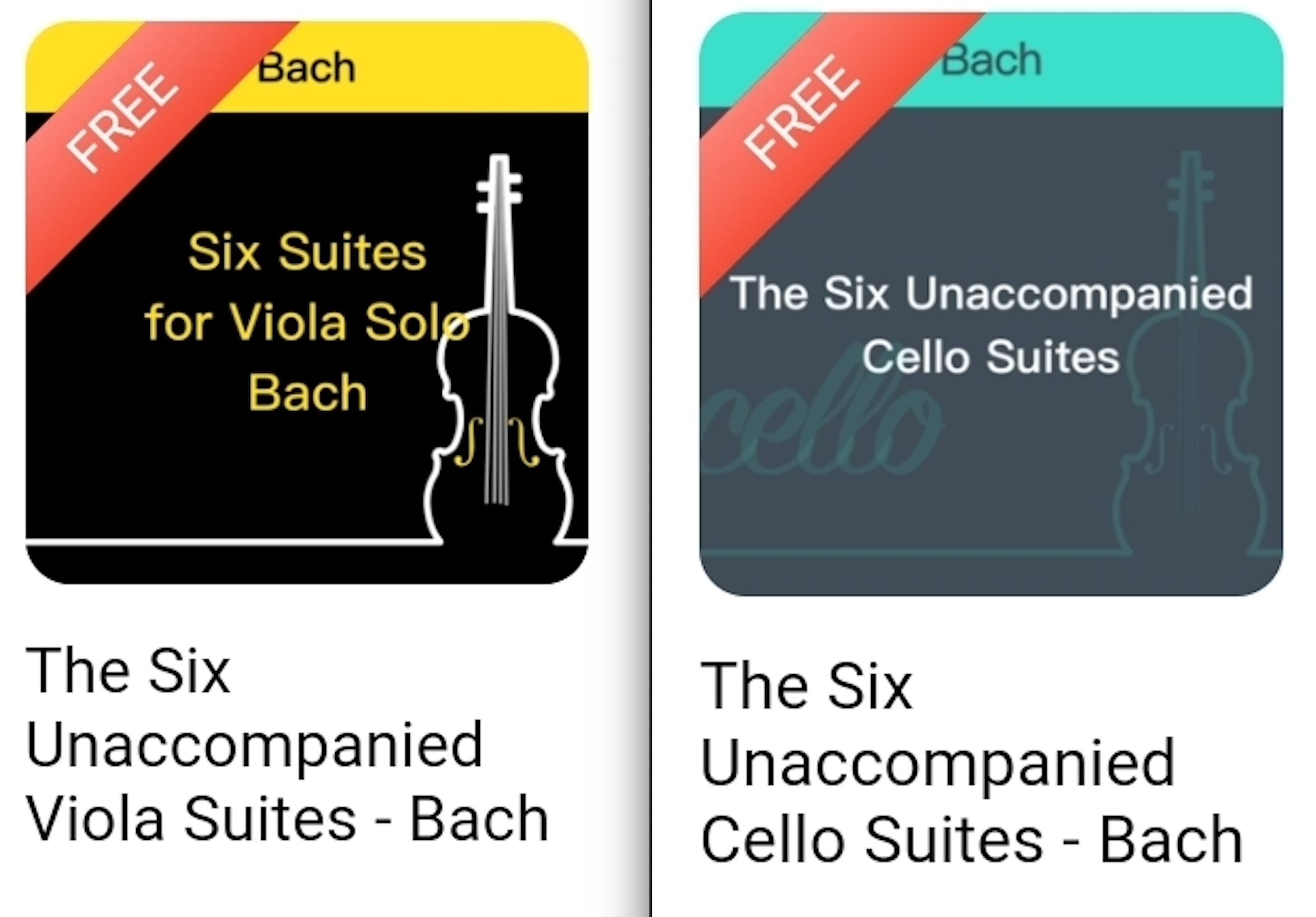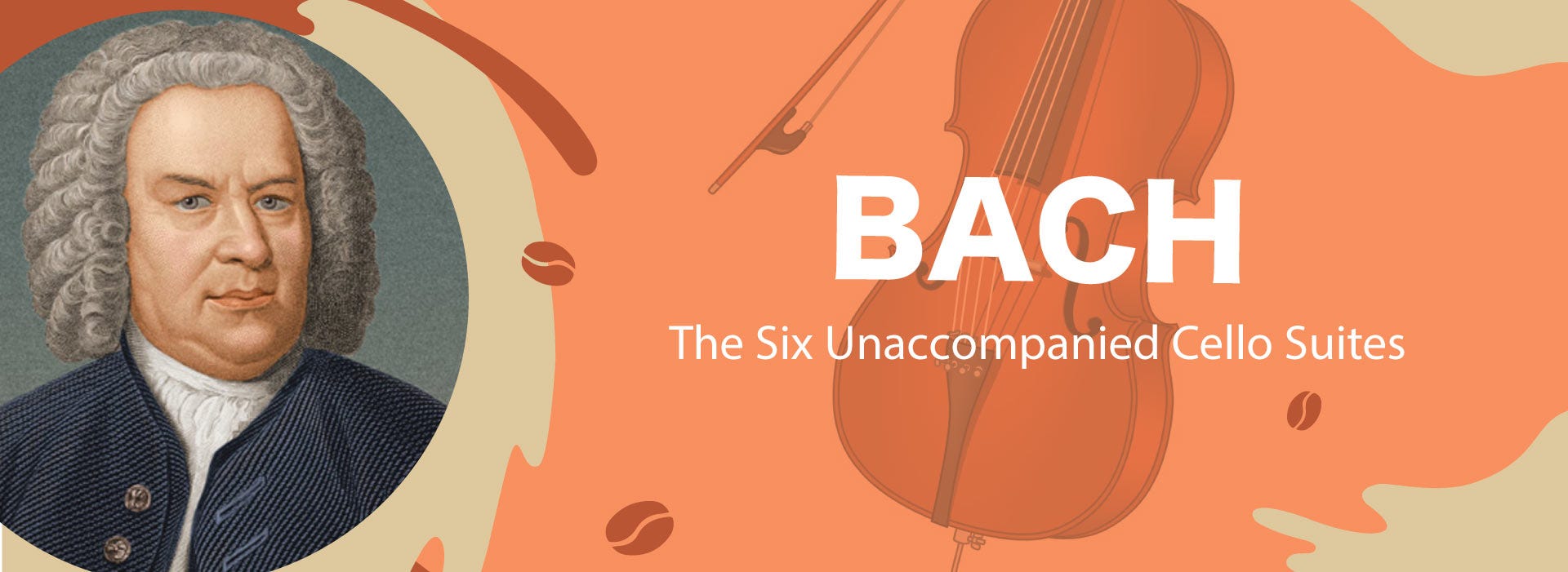Free Sheet Music on Violy App
Hello, Violy cellists and violists! Bach’s Cello Suites will run through your ‘violy’ February and make the month more fascinating. During the whole month, the Violy sheet music album of The Six Unaccompanied Cello Suites for Cello and for Viola are FREE to all Violy users. In this article, we will go through these Baroque masterpieces from Johann Sebastian Bach, one of the greatest composers of all time.

Cello Album Composer: Johann Sebastian Bach
Johann Sebastian Bach was a German composer and musician of the Baroque period. The Bach family had already counted several composers when Johann Sebastian was born as the last child of a city musician in Eisenach. He is known for instrumental compositions such as the Brandenburg Concertos and the Goldberg Variations. He enriched German styles through his mastery of counterpoint, harmonic and motivic organization, and his adaptation of rhythms, forms, and textures from abroad, particularly from Italy and France.

Bach’s compositions include hundreds of cantatas, Latin church music, passions, oratorios, and motets. He often adopted Lutheran hymns, not only in his larger vocal works, but also in his four-part chorales and sacred songs. He wrote extensively for organ and other keyboard instruments. He also composed concertos for violin and harpsichord, and suites for orchestra. Many of his works employ the genres of canon and fugue.
Throughout the 18th century, Bach was primarily valued as organist, while his keyboard music, such as The Well-Tempered Clavier, was appreciated for its didactic qualities. The 19th century saw the publication of some major Bach biographies, and by the end of that century, all of his known music had been printed.
Bach’s Cello Composition
Bach’s six unaccompanied cello suites are some of the most frequently performed and recognizable solo compositions ever written for cello. Bach most likely composed them during the period 1717–23, when he served as Kapellmeister in Köthen. The title given on the cover of Anna Magdalena Bach’s manuscript was Suites à Violoncello Solo senza Basso (Suites for cello solo without bass).
As usual in a Baroque musical suite, after the prelude which begins each suite, all the other movements are based around Baroque dance types. The suites are structured in six movements each: prelude, allemande, courante, sarabande, two menuets or two bourrées or two gavottes, and a final gigue. The Bach cello suites are considered to be among the most profound of all classical music works. Wilfrid Mellers described them in 1980 as “Monophonic music wherein a man has created a dance of God.”
Due to the works’ technical demands, étude-like nature, and difficulty in interpretation, the cello suites were little known and rarely publicly performed until they were revived and recorded by Pablo Casals in the early 20th century. Since then, they have been performed and recorded by many renowned cellists and have been transcribed for numerous other instruments. The six cello suites are considered to be some of Bach’s greatest musical achievements.
Violy FREE Album Contents:
There are totally 42 pieces of music in the FREE album of The Six Unaccompanied Cello Suites — Bach (and the same pieces for Viola) on Violy, including:
- Suite I-Prelude | BPM = 80
The Prelude of Suite №1 in G major, mainly consisting of arpeggiated chords, is probably the most well-known movement from the entire set of suites and is regularly heard on television and in films.
Suite I-Allemande | BPM = 80
Suite I-Courante | BPM = 80
Suite I-Sarabande | BPM = 80
Suite I-Menuet I | BPM = 80
Suite I-Menuet II | BPM = 80
Suite I-Gigue | BPM = 80
Suite II-Prelude | BPM = 80
Suite II-Allemande | BPM = 80
Suite II-Courante | BPM = 80
Suite II-Sarabande | BPM = 80
Suite II-Menuet I | BPM = 80
Suite II-Menuet II | BPM = 80
Suite II-Gigue | BPM = 80
The Prelude of Suite №2 in D minor consists of two parts. The first part has a strong recurring theme that is immediately introduced in the beginning. The second part is a scale-based cadenza movement that leads to the final powerful chords. The subsequent allemande contains short cadenzas that stray away from this very strict dance form. The first menuet contains demanding chord shiftings and string crossings.
- Suite III-Prelude | BPM = 80
- Suite III-Allemande | BPM = 80
- Suite III-Courante | BPM = 80
- Suite III-Sarabande | BPM = 80
- Suite III-Bourrée I | BPM = 80
- Suite III-Bourrée II | BPM = 80
- Suite III-Gigue | BPM = 80
The Prelude of Suite №3 in C major consists of an A–B–A–C form, with A being a scale-based movement that eventually dissolves into an energetic arpeggio part; and B, a section of demanding chords. It then returns to the scale theme and ends with a powerful and surprising chord movement.
The allemande is the only movement in the six suites that has an up-beat consisting of three semiquavers instead of just one, which is the standard form.
The second bourrée, though in C minor, has a two-flat (or G minor) key signature. This notation, common in Pre-Classical music, is sometimes known as a partial key signature. The first and second bourrée of the third suite are sometimes used as solo materials for other bass instruments, such as tuba, euphonium, trombone and bassoon.
- Suite IV-Prelude | BPM = 80
- Suite IV-Allemande | BPM = 80
- Suite IV-Courante | BPM = 80
- Suite IV-Sarabande | BPM = 80
- Suite IV-Bourrée I | BPM = 80
- Suite IV-Bourrée II | BPM = 80
- Suite IV-Gigue | BPM = 80
Suite №4 in E♭ major is one of the most technically demanding of the six suites, as E♭ is an uncomfortable key on the cello and requires many extended left hand positions. The key is also difficult on cello due to the lack of resonant open strings. The prelude primarily consists of a difficult flowing quaver movement that leaves room for a cadenza before returning to its original theme.
The very peaceful sarabande is quite obscure about the stressed second beat, which is the basic characteristic of the 3/4 dance. In this particular sarabande, almost every first beat contains a chord, whereas the second beat most often does not.
- Suite V-Prelude | BPM = 80
- Suite V-Allemande | BPM = 80
- Suite V-Courante | BPM = 80
- Suite V-Sarabande | BPM = 80
- Suite V-Gavotte I | BPM = 80
- Suite V-Gavotte II | BPM = 80
- Suite V-Gigue | BPM = 80
Suite №5 in C minor was originally written in scordatura with the A string tuned down to G, but nowadays a version for standard tuning is included in almost every edition of the suites along with the original version. Some chords must be simplified when playing with standard tuning, but some melodic lines become easier as well.
The prelude is written in an A–B form. It is a French overture. It begins with a slow, emotional movement that explores the deep range of the cello. After that comes a fast and very demanding single-line fugue that leads to the powerful end.
This suite is most famous for its intimate sarabande, which is the second of only four movements in all six suites that do not contain any chords. Mstislav Rostropovich describes it as the essence of Bach’s genius. The fifth suite is also exceptional as its courante and gigue are in the French style, rather than the Italian form of the other five suites.
- Suite VI-Prelude | BPM = 80
- Suite VI-Allemande | BPM = 80
- Suite VI-Courante | BPM = 80
- Suite VI-Sarabande | BPM = 80
- Suite VI-Gavotte I | BPM = 80
- Suite VI-Gavotte II | BPM = 80
- Suite VI-Gigue | BPM = 80
It is widely believed that Suite №6 in D major was composed specifically for a five-stringed violoncello piccolo, a smaller cello, roughly 7⁄8 normal cello size with a fifth upper string tuned to E. However, some people say there is no substantial evidence to support this claim. Cellists playing this suite on a modern four-string cello encounter difficulties as they are forced to use very high positions to reach many of the notes.
This suite is written in much more free form than the others, containing more cadenza-like movements and virtuosic passages. It is also the only one of the six suites that is partly notated in the alto and soprano clefs (modern editions use tenor and treble clefs), which are not needed for the others since they never go above the note G4 (G above middle C).
Stay tuned, Violy musicians!
Have a HAPPY practice!!
More Violin Articles:
Teaching Violin Students to Read Key Signatures
Solfeges used in Violin Lessons
How to Choose Right Violin Strings
Things You Must Know About Violin Bowing
Tips for Proper Violin Maintenance
Practice Effectively after Violin Lessons
Acoustic Violin VS Electric Violin
Also, check out violin sheet music on Violy App~
#ViolyPractice makes Perfect!!
Follow us on: Violy.app
